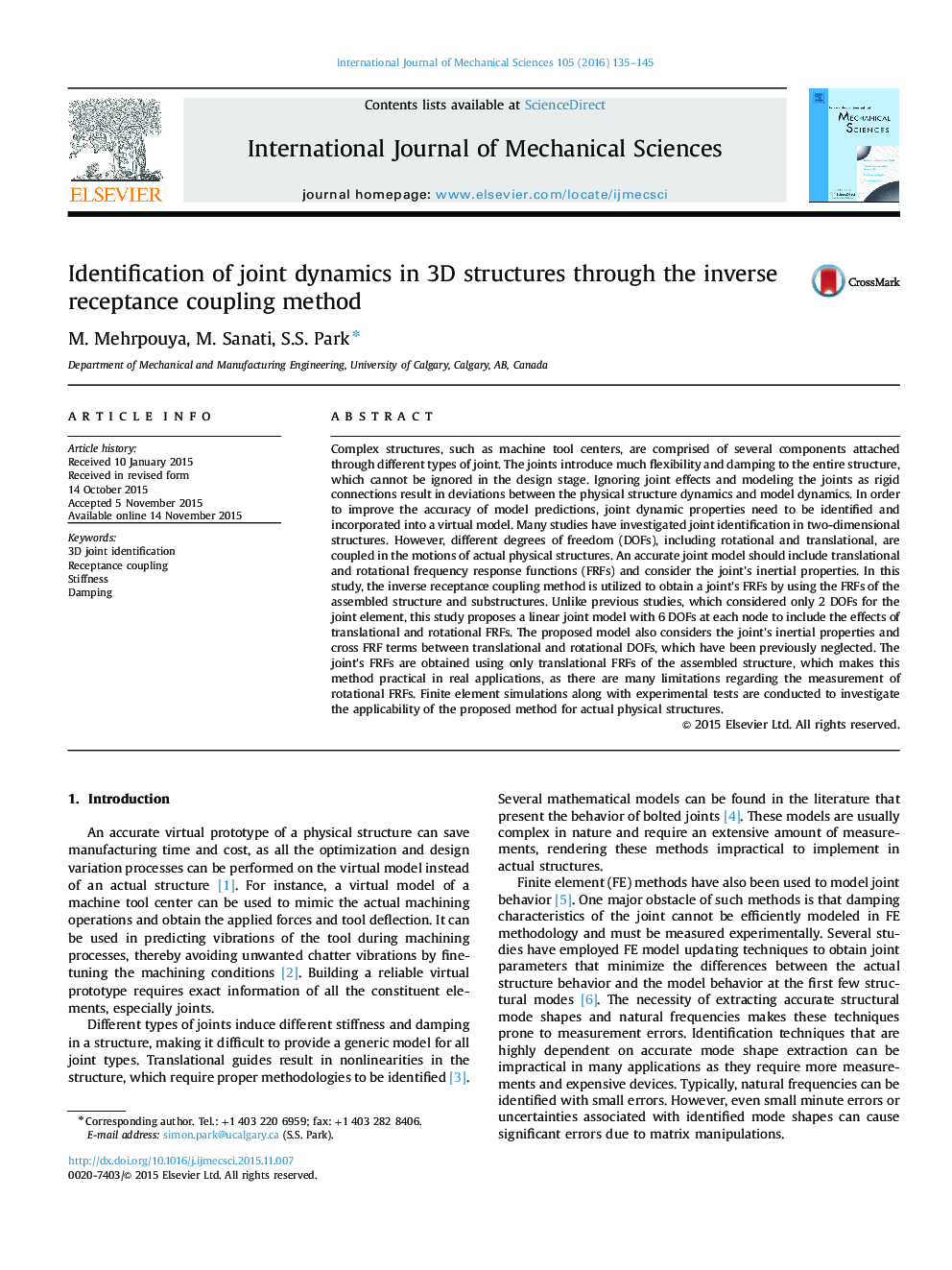| Article ID | Journal | Published Year | Pages | File Type |
|---|---|---|---|---|
| 782230 | International Journal of Mechanical Sciences | 2016 | 11 Pages |
•Presenting a joint identification technique that is applicable to 3D structures.•Extracting the joint׳s FRF matrix using only translational FRFs of the structure.•Considering both translational and rotational degrees of freedom of the joint•Considering the effects of joint׳s inertial properties ignored in previous studies.•More accurate results for the joint dynamics are obtained using more measurements.
Complex structures, such as machine tool centers, are comprised of several components attached through different types of joint. The joints introduce much flexibility and damping to the entire structure, which cannot be ignored in the design stage. Ignoring joint effects and modeling the joints as rigid connections result in deviations between the physical structure dynamics and model dynamics. In order to improve the accuracy of model predictions, joint dynamic properties need to be identified and incorporated into a virtual model. Many studies have investigated joint identification in two-dimensional structures. However, different degrees of freedom (DOFs), including rotational and translational, are coupled in the motions of actual physical structures. An accurate joint model should include translational and rotational frequency response functions (FRFs) and consider the joint’s inertial properties. In this study, the inverse receptance coupling method is utilized to obtain a joint׳s FRFs by using the FRFs of the assembled structure and substructures. Unlike previous studies, which considered only 2 DOFs for the joint element, this study proposes a linear joint model with 6 DOFs at each node to include the effects of translational and rotational FRFs. The proposed model also considers the joint׳s inertial properties and cross FRF terms between translational and rotational DOFs, which have been previously neglected. The joint׳s FRFs are obtained using only translational FRFs of the assembled structure, which makes this method practical in real applications, as there are many limitations regarding the measurement of rotational FRFs. Finite element simulations along with experimental tests are conducted to investigate the applicability of the proposed method for actual physical structures.
